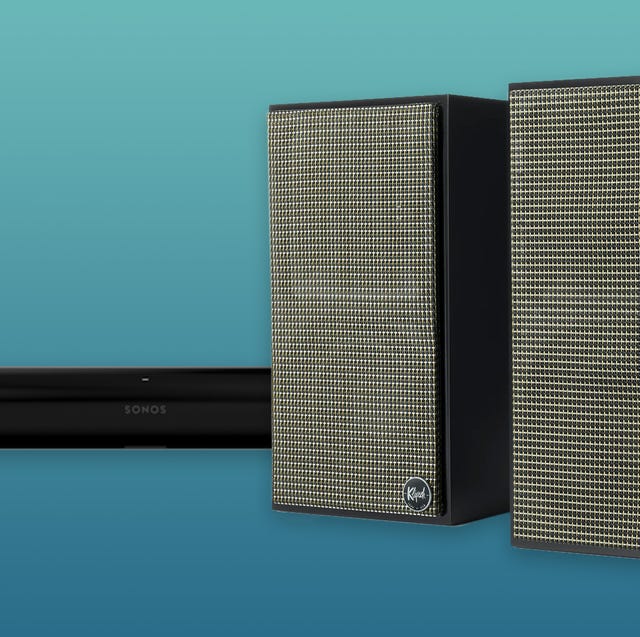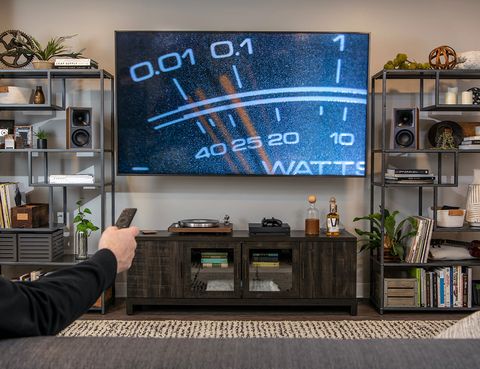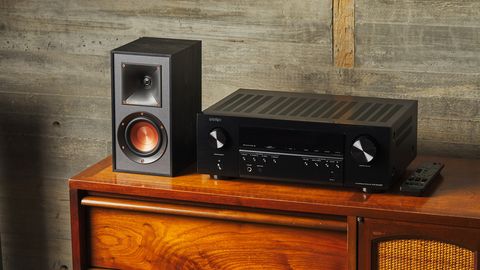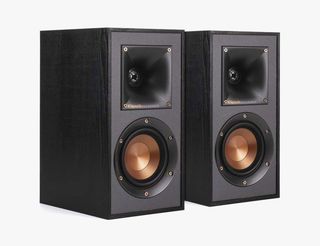The problem: You just bought a 4K TV and it works and looks great, but the sound quality of its built-in speakers is trash. You can’t hear the dialogue. The bass is terrible. And the sound is just too quiet, even when you crank it. You want to improve your TV’s sound but you don’t want to deal with all the moving pieces of a surround sound system and you don’t want to spend a ton — what should you do?
The answer: Lucky for you, you have a few great options that will improve your TV's sound. First, you can buy a soundbar. Two, you can buy a speaker system that plugs right into your TV. Or three, you can go the traditional route of buying an AV receiver and a pair of passive loudspeakers. All three options can be done affordably and with very little setup hassles. But which should you choose?
Naturally, there are advantages and disadvantages to all three. How much space do you have in and around your TV? Is your TV wall mounted or it sitting on a media console? How easily does installation have to be? Do you want to deal with a ton of wires? Do you value ease of setup or sound quality? Do you eventually see yourself expanding your system in the future?
Those are all very important questions to answer before setting out on your journey.
Option A: The Soundbar
A soundbar is the easiest of the three options, as it’s just one speaker and it’s essentially just a plug-and-play operation. It’s (probably) the more affordable option, too. There are a lot of different soundbars options out there, but we recommend that that you buy at least a three-channel (3.0) soundbar. This means that the soundbar will three separate drivers in it — for left, right and center — and sound significantly better and more immersive than just your TV.
You also want to buy a soundbar that supports HDMI ARC. This means that the soundbar plugs directly into your TV through the HDMI ARC port, allowing you to change the volume of the soundbar (and TV) with one remote. It simplifies things. (For reference, many older soundbars hook up to your TV via an optical connection, which doesn't as high resolution audio or as immersive technologies.)
The last thing to consider is whether or not you are going to want to built out your soundbar system down the round. Many of these soundbar manufacturers also sell wireless subwoofers and rear-channel speakers, so you can add to your system later on to make it more immersive. Some soundbars don't allow you to built out a more immersive surround sound system, so it’s worth thinking about your long-term plan ahead of time.
Recap
Pros: Easy installation, affordable
Cons: Less flexibility to eventually built-out your system
3 Great Soundbars to Buy
Option B: Powered Speakers
If you want the true stereo sound that a pair of loudspeakers delivers, but don't want to deal with the extra component that is an AV receiver, you've got an option. There's a new breed of powered speakers that have an HDMI or optical connection. This means that can hook up your speakers directly to your TV. No AV receiver required.
The biggest advantage of this dual speaker system is audio quality. The positioning of the speakers — one on either side of the TV — will naturally make the system sound more immersive. The other advantage is that they have most of the same conveniences as modern soundbars, including a plug-and-play installation, built-in Bluetooth and Wi-Fi for easy music streaming, as well as subwoofer outputs so you can build out the system later on down the road.
The downside to active powered speaker systems is that they tend to be expensive. Also, there aren't that many of these system out there. Klipsch's The Fives, which were just released in 2020, were the first powered speakers to have an HDMI-ARC connection.
Recap
Pros: Wider soundstage, easy installation
Cons: Requires more room, more expensive, rare
3 Great Powered Speakers to Buy
Option C: Passive Bookshelf Speakers and AV Receiver
A great pair of passive bookshelf speakers can also make great TV speakers. And you can buy a great pair of loudspeakers for right around $300. ELAC, Q Acoustics, Fluance, Kanto and Wharfedale are just a few audio companies that make speakers in this price range. The catch is that you'll also need to buy an AV receiver, which will connect the TV and the speakers. Yamaha, Denon, Onkyo and Sony all make affordable options.
This is the more traditional home theater setup. It's usually the more expensive option (compared to buying a soundbar) as you’re buying both speakers and an AV receiver, but it does have some distinct advantages. It gives you more flexibility to add to your system later on down the road, say if you want to add a center channel speaker or a wireless subwoofer. And you’re not nearly as tied into a brand’s ecosystem — you can mix and max future speakers by different brands together because they all can talk to each other through the AV receiver.
The last thing bit of buying advice, at least as far as the AV receiver is concerned, is that you might want to buy one with the future in mind. If you think you're going to eventually want to build a more immersive surround sound system, you want to buy an AV receiver that supports five, seven or more channels. You also want to make sure that it supports surround sound technologies, like Dolby Atmos or DTS:X; if the AV receiver supports them, you can build out a speaker system that supports them, too.
Recap
Pros: Wider soundstage, more flexibility to build out your system the way you want
Cons: Requires more room, generally more expensive, installation is more complicated































